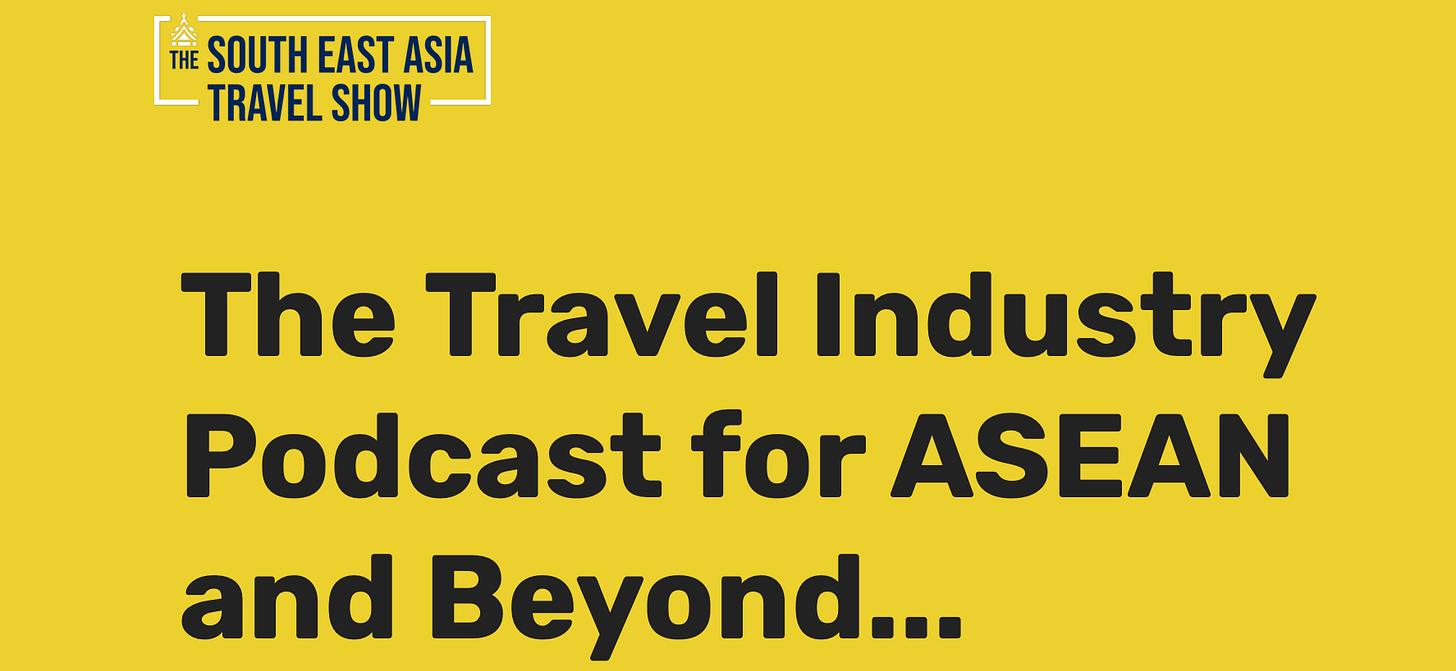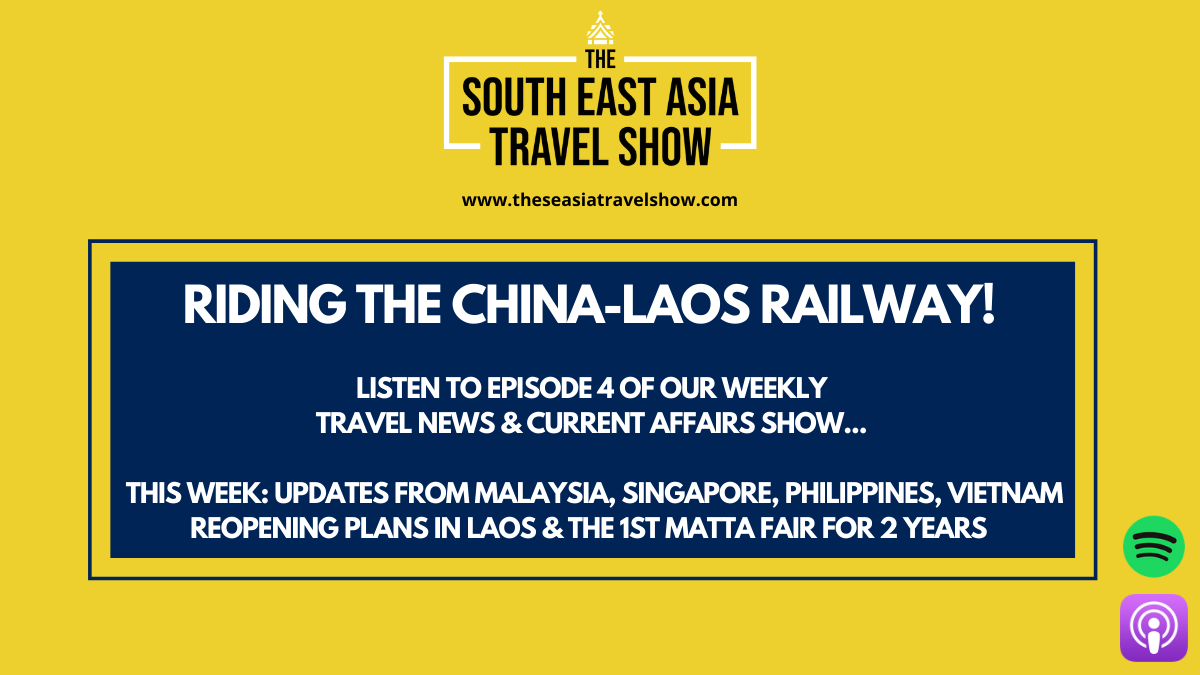Asia Pacific Travel & Tourism Report #9 - November 2021
10 top talking points as Omicron casts a shadow over South East Asia's reopening.
Hello. Welcome to the 9th Asia Pacific Travel & Tourism Report… which is co-produced as always with Dr Jaeyeon Choe.
Featured destinations this month include Australia, Laos, New Zealand, the Philippines, Singapore, South Korea, Thailand and Vietnam.
And, of course, Omicron overshadows everything.
If you like the report, please share it with a colleague by using the button below.
Thanks for being on board,
Gary
10 Top Talking Points in October 2021
1) Omicron Threatens New Global Crisis
It’s almost exactly 23 months since the world first learned about cases of “suspected pneumonia” in the Chinese city of Wuhan. We know what happened next.
This week, we learned that a new COVID-19 “variant of concern,” B.1.1.529 - or Omicron - which was first scientifically identified in Botswana and South Africa, has seemingly spread worldwide. The WHO says the first known infection specimen was collected on 9 November.
That’s 19 days ago.
How far has it spread? Belgium, Canada, Denmark, Germany, Italy, Hong Kong and the UK are among the nations with confirmed cases. Many more will follow.
Israel has temporarily closed its borders. Morocco too.
Countries across Asia Pacific - including Australia, Maldives, Indonesia, Singapore and Malaysia - responded with a mix of travel and flight bans to/from southern African countries, and raised quarantine periods upon return from those nations.
Singapore has deferred 3 new VTLs, with Qatar, Saudi Arabia and the UAE. Indonesia increased its quarantine period for all international arrivals to 7 days. Japan is banning entry to the country for non-nationals except those with resident/work visas.
The Philippines has postponed its planned reopening to international travellers.
Many more will follow.
This further isolates countries in extreme need, and does little to prevent containment of infections that have already travelled far and wide.
Omicron has the potential to send the world back into its lockdown tailspin. Its emergence proves too many easy assumptions were made about COVID-19.
It represents a failure of the “We’re all in it together” global promise, and underscores the strategic selfishness of governments that hold the largest vaccine stocks.
This was ENTIRELY avoidable.
On Tuesday, Gary Bowerman & Hannah Pearson will host a special Omicron edition of The South East Asia Travel Show on the evolving situation in South East Asia and Asia Pacific.
2) South East Asia’s Reopening Lists
Cambodia’s decision this month to reopen to vaccinated travellers from all countries is unusual in South East Asia.
We’ve become accustomed to governments selecting tranches of eligible countries based on various criteria.
Singapore is accelerating its Vaccinated Travel Land countries (now totalling 27 countries, plus special travel exemptions for China, Hong Kong, Macao and Taiwan).
Thailand reopened ‘quarantine’ free on 1 November to vaccinated visitors from 63 countries and territories. Bali officially ‘reopened’ to 19 countries in mid-October, but appears to be retreating into caution.
More recently, Vietnam welcomed vaccinated travellers to 5 selected destinations from 72 countries.
The Philippines initially stated it would reopen to vaccinated travellers from 44 Green List nations. On 26 November, that list was expanded to 159!
A common theme of these lists is China, as tourism boards keep the door open should the Chinese government do what no-one expects: reopen its borders anytime soon.
3) Thailand Reports Gradual Recovery
Thailand’s eagerness to rebuild tourism is driven by its pre-pandemic contribution of between 12% (direct) and 20% (direct + indirect) to GDP. In the first two weeks after reopening quarantine-free on 1 November, around 50,000 visitors arrived.
Overall, including the Phuket Sandbox, Thailand welcomed 106,117 foreign tourists across the first 10 months of 2021. International arrivals are mostly from Europe (Germany, UK, Scandinavian countries), the US and the Middle East. China, which provided 11 million arrivals in 2019 is, of course, absent.
Thailand says it will further ease entry requirements on 16 December.
While Thailand’s full vaccination rate is 57%, there has been a concern for public health as some foreign tourists are not wearing masks. The government started fining (a maximum of TBH20,000) unmasked tourists in public spaces.
“Nightlife entertainment venues” will stay closed until the New Year, while SHA-certified restaurants are allowed to offer dine-in services and alcohol until 9 pm.
However, beyond nightlife, Thailand needs to recognise changing traveller demands. For example, individual travellers will likely stay longer. People on workcations seek more personalisation. As the reopening develops, they might seek alternative experiences, such as gastronomy travel to rural villages and hiking and cycling trips.
4) Diverse Approaches in Australia & New Zealand
A contrasting summer season beckons Down Under as Australia and New Zealand follow different paths.
In a similar manner to Singapore, Australia is gradually stepping up its reopening.
Vaccinated Singaporeans began visiting Australia quarantine-free on 21 November.
Vaccinated South Koreans will be able to visit from 1 December. Ditto vaccinated visitors from Japan.
International students and “eligible visa holders” can also arrive from the same day. Josh Frydenberg, Australia’s Treasurer, said on Monday:
"International students are worth some $40 billion to our economy.”
In New Zealand, the travel industry reacted strongly to a 7-day “isolate at home” mandate when the country reopens to inbound visitors in 2022.
The 3-phase plan will see vaccinated New Zealanders able to enter New Zealand from Australia on 17 January, and from other countries on 14 February.
Vaccinated international visitors will be permitted to arrive in New Zealand from 30 April.
Chris Hipkins, New Zealand’s COVID-19 Response Minister, said on Wednesday:
“We always said we’d open in a controlled way, and this started with halving the time spent in MIQ to seven days. Retaining a seven-day isolate at home period for fully vaccinated travellers is an important phase in the reconnecting strategy to provide continued safety assurance.”
5) Bali Retreats from Inbound Tourism
Bali officially ‘reopened’ to inbound travel on 14 October. However, several weeks into the reopening, no airlines had resumed direct services. The number of advance hotel reservations from international visitors has been low to possibly zero.
Tourists from 19 countries eligible to visit Bali must quarantine for 3 days, and have health insurance cover of at least US$100,000 and proof of a pre-paid hotel booking.
Local media reports that tourists are reluctant to visit Bali under these conditions.
Indonesia is anticipating a “third wave” and appears to be retreating into caution regarding the safety of allowing international travellers to return.
At the same time, domestic Indonesian travellers to Bali - the island’s number one source of visitors pre-pandemic - are returning in solid numbers.
Indonesia’s government has talked about Vaccinated Travel Lanes, and even proposed expediting a regional travel corridor at the recent ASEAN Leader’s Summit.
For now, it seems unlikely international travellers will return in 2021.
6) South Koreans Kickstart Vietnam’s Reopening
Vietnam began the gradual reopening if its borders this month. It also launched the Live Fully in Vietnam campaign.
Kickstarting the reopening was a group of 200 South Korean tourists, which arrived on Vietnam’s largest island Phu Quoc on 20 November, via VietJet.
Fully vaccinated travellers must stay in selected resorts without a 14-day quarantine. They are required to take PCR tests on the 1st and final days of their trip.
According to the Health Ministry, all service industry employees and 99% of Phu Quoc’s adult citizens have been fully vaccinated, and the island is planning to vaccinate residents aged 12 to 17 in December.
At the start go the reopening, 29 charter flight visitors from South Korea also arrived at Danang Airport in Quang Nam province.
South Korean tourists in Vietnam are busily sharing their experiences on their blogs and vlogs attracting plenty of interest among potential travellers.
7) Squid Game(s) for VTL Visitors to South Korea
On 15 November, the first tourists from Singapore since the start of the pandemic arrived in South Korea under a bilateral Vaccinated Travel Lane agreement. They are exempt from a 14-day quarantine.
From 15-21 November, 1,015 Singaporeans arrived in South Korea.
Reports suggest they were interested in shopping at duty free stores, K-beauty, K-fashion and K-food (i.e., Red Ginseng) products.
The Korea Tourism Organisation (KTO) took a group of Singaporean travel agents, journalists and influencers for tours in Greater Seoul and Gangwon Province. They also participated in ‘traditional’ Korean games that featured in Squid Game, of course!
Singaporean tourists are also visiting Jeju Island, where they can drive around by themselves to visit waterfalls and national parks. Jeju City welcomed them with a special event and baskets of the island’s famous tangerines. Gyeongju City, the capital of the ancient kingdom of Silla, is also proving popular.
Travel flows are expected to develop gradually. The KTO and Jeju City authority are both planning to roll out targeted marketing campaigns for Singaporean visitors.
8) Readying to Ride the China-Laos Railway
The beautiful country of Laos is about to change forever. The arrival of modern railway infrastructure is just days away - 5 years after construction began.
Friday 3 December - one day after the original start date of 2 December, which is Laos National Day - will see the opening of the China-Laos railway
It will form the first part of China’s ambitious plan to finance and build a pan-ASEAN rail system connected to its own high-speed rail network - which is the world’s largest.
The 420-kilometre railway extends from Boten on the Lao-Chinese border to the capital Vientiane. It will operate at a top speed of 160 kph. The journey time between Vientiane and Luang Prabang is expected to be 90 minutes.
At present, the launch is scheduled to include two passenger journeys within Laos, and two cargo journeys between China and Laos.
It is not currently known when cross-border passenger services will commence.
On this week’s The South East Asia Travel Show, Gary chats with Vientiane-based Jason Rolan, Senior Partner of RDK Group, about the opening of the China-Laos Railway and Laos’s reopening plans.
Or wherever you grab your pods!
9) Vietnam’s 1st Metro Line in Hanoi
You might see less motorbikes in Hanoi next time you visit. Maybe. On 6 November, Hanoi opened Vietnam’s first metro line. The capital city of 8.3 million people is plagued by traffic congestion due to daily swarms of motorbikes, cars and trucks. The new metro line is intended to increase the number of public transport users, and help reduce traffic congestion and the city’s worsening air pollution.
10) Philippines Reopens to “Non-Visa” Countries
Fully vaccinated visitors from “non-visa required countries” can enter the Philippines from 1 December. There will be no quarantine or on-arrival or PCR test for visitors who recorded a negative PCR test up to 72 hours before leaving one of 159 ‘Green List’ countries.
And, that’s a wrap.
The Asia Pacific Travel & Tourism Report will return in January 2022.
The weekly Asia Travel Re:Set newsletter is back next Sunday for the final edition of 2021. Here’s the most recent issue (#64 The 'China-Shaped Gap' in South East Asia's Travel Restart) in case you missed it.
Have a great week,
Gary






